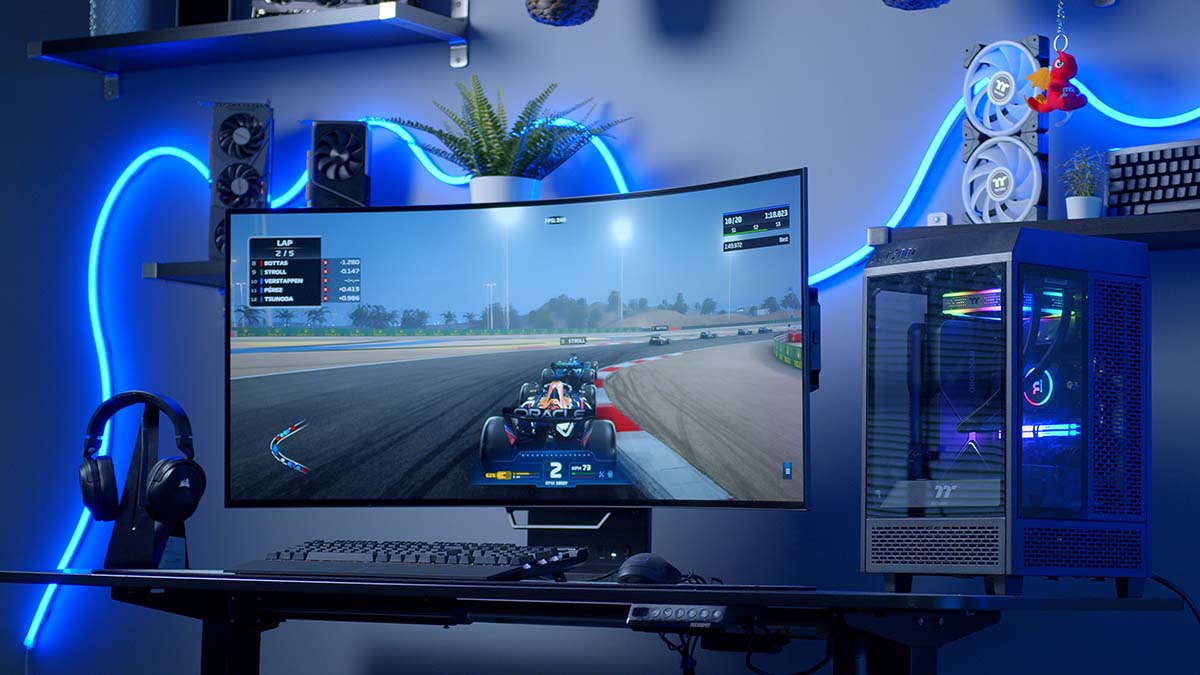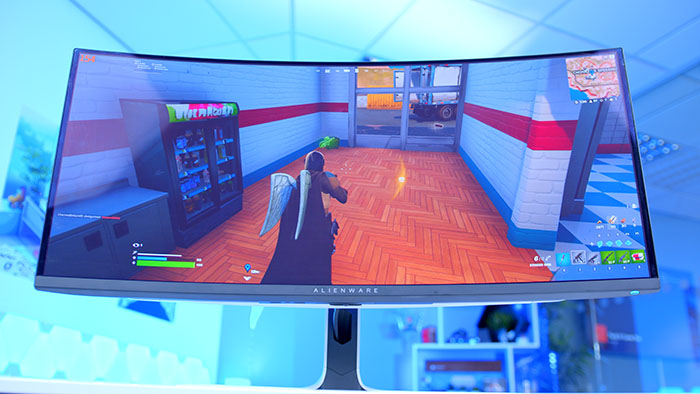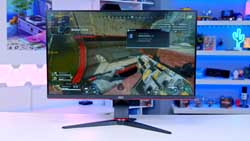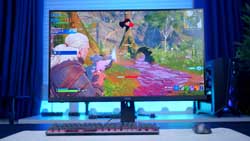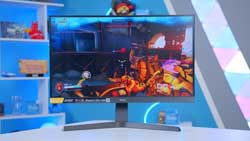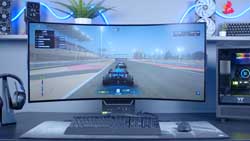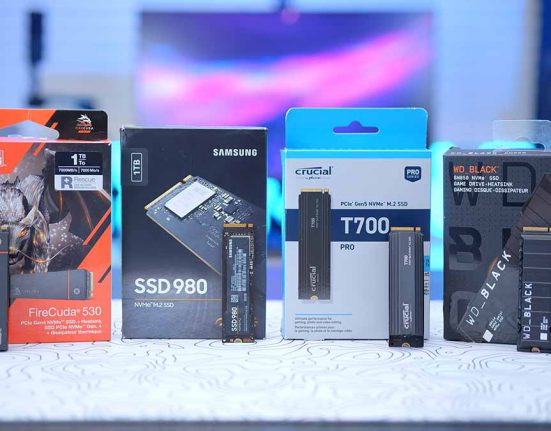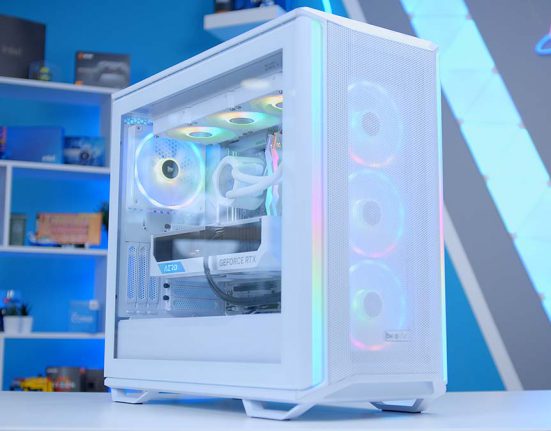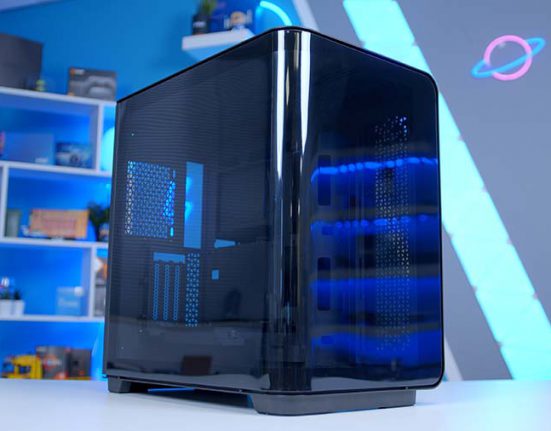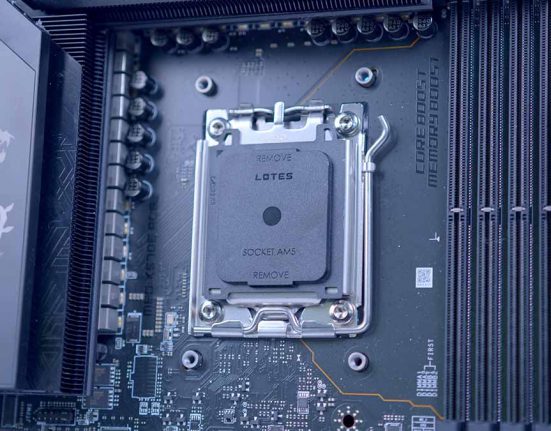Introduction
After building a custom gaming PC, or picking up a prebuilt system, the next big step is to find a gaming monitor that can offer the best visual fidelity and performance for your shiny new system. But with gaming monitors coming in all shapes and sizes, along with numerous performance variables to consider, choosing the type of gaming monitor for your setup can be quite the challenge, let alone finding a specific model. This can easily lead to plenty of confusion and indecisiveness when trying to find the best gaming monitor to suit your demands.
But never fear, as we’ve done the hard work for you. After testing a wide range of gaming monitors that cater to various budgets, form factors, and gameplay experiences, we’ve culminated a definitive list of the best gaming monitors on the market. There are a number of factors that we’ve taken into consideration when picking the best gaming monitors, such as resolution and screen size, which means you should be able to find a display that fits seamlessly into your gaming setup.
All Monitors in Our Testing Roundup
The Best Gaming Monitors
1. AOC Gaming 27G2SPU
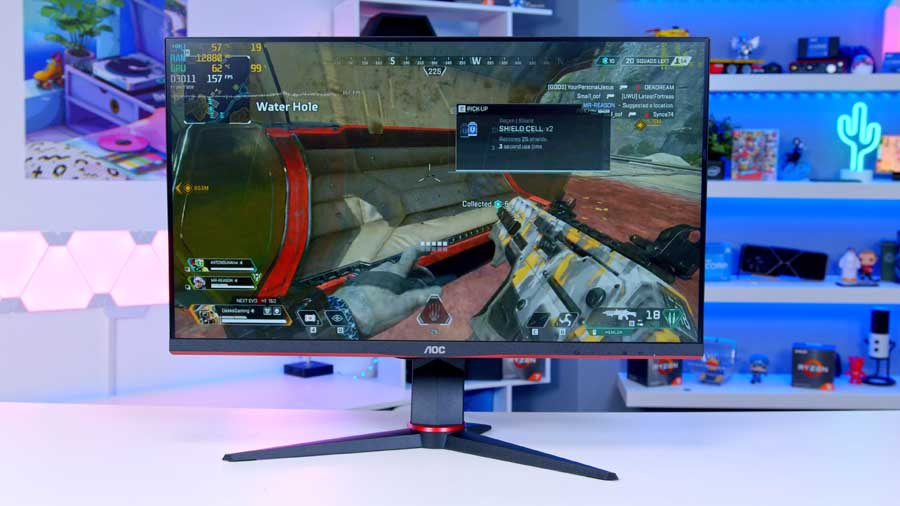
Advancements in technology has resulted in 1080p gaming monitors somewhat fading into obscurity, but they are still worth considering for gamers on a tight budget. Out of all the 1080p monitors we’ve tested, the AOC Gaming 27G2SPU is our go-to pick to pair alongside a budget-oriented gaming PC.
This 27″ display features a 165Hz refresh rate and 1ms response time, which provides more competitive performance than generic 1080p monitors. On top of this, the AOC Gaming 27G2SPU comes with AMD FreeSync Premium, which keeps fast-paced action looking smooth and consistent.
Despite the lower resolution, the IPS panel on this display improves the colour accuracy and image vibrancy. Also, these panels are known for their superior viewing angles, making this display a great choice for multi-monitor setups.
As for the design, the AOC Gaming 27G2SPU comes with a slender Y-shaped stand, which includes height adjustment to create an ideal viewing position. The red accents throughout the monitor and stand might not be to everyone’s taste, but this isn’t too intrusive when placed into a setup.
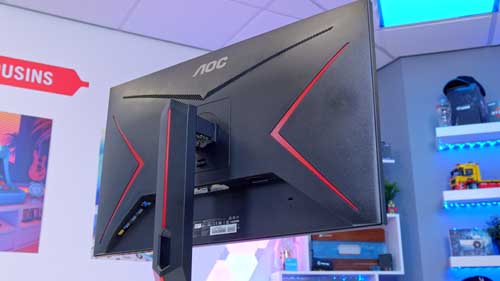
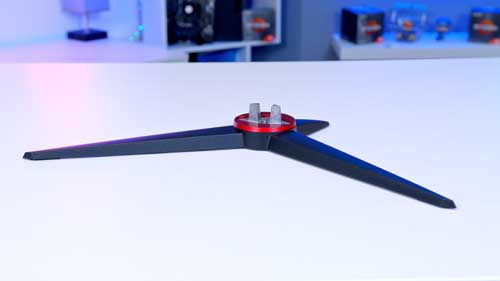
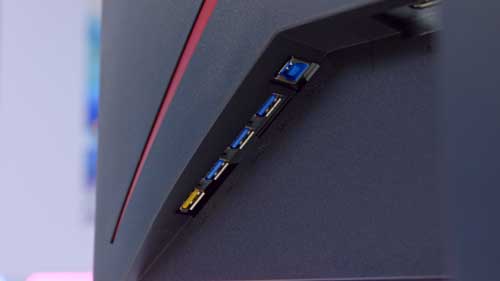
Buy the AOC Gaming 27G2SPU on:
2. Gigabyte AORUS FI27Q-X
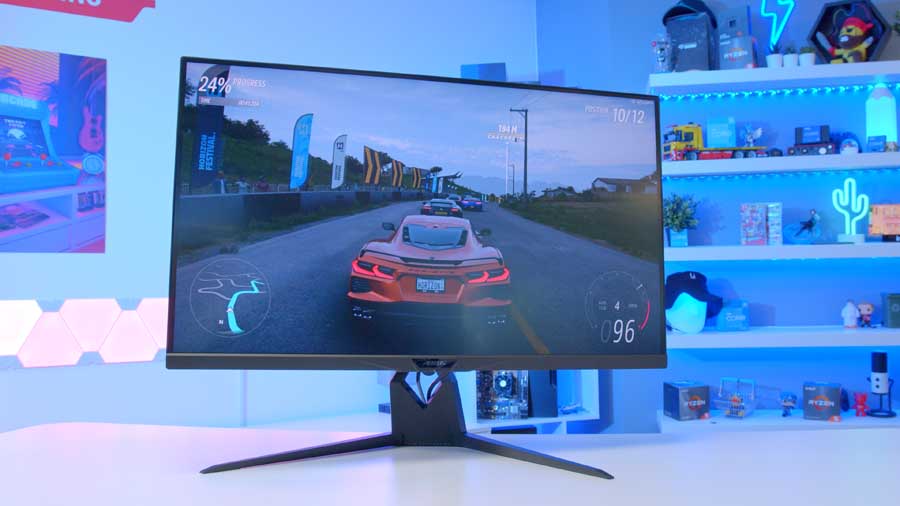
For gamers wanting the perfect balance of visual fidelity and gaming performance, a 1440p gaming monitor like Gigabyte’s AORUS FI27Q-X is an ideal choice. At the time of its release, this display was one of the first to provide a 240Hz refresh rate at 1440p. Whilst monitors with similar specs have arrived since then, Gigabyte’s offering is still amongst the best in our eyes.
This 240Hz 1440p display is backed by an IPS panel, which leads to a stunning image that competes with cheaper 4K monitors. On top of this, the use of rapid-IPS technology ensures this gaming monitor adheres to the industry-standard 1ms GtG response time.
The Gigabyte AORUS FI27Q-X boasts a design that is an excellent addition to any gaming-oriented setup. Along with RGB lighting integrated into the stand, frame, and back panel, this monitor has plenty of intricate details throughout for a premium aesthetic. The design is also very functional, with the included stand providing plenty of ways to adjust the position the screen for the most ergonomic viewing experience.

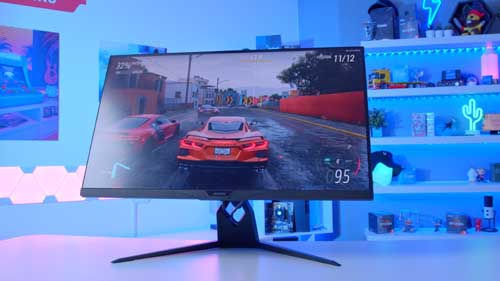

Buy the Gigabyte AORUS FI27Q-X on:
3. MSI MAG 323UPF

While gaming at 4K isn’t as common on PC due to the performance demands, anyone with a beefy system would certainly notice the benefit of bumping up their visual fidelity with a 4K gaming display. MSI’s MAG 323UPF stands out as the best option within this area, as it provides a healthy balance of visuals and performance at a price point that isn’t too hard to swallow.
This 4K display offers a 160Hz refresh rate and 1ms response time, which is ideal for those playing a range of competitive and narrative titles. That being said, those looking to take their competitive gaming seriously will be better off sticking to the lower resolutions.
But for gamers hoping to become immersed in some enthralling single-player narratives, the 4K IPS panel bumps up the visual quality, opening up in-game worlds to provide a level of detail simply not possible on a 1080p or 1440p display. To increase the sense of immersion further, the MSI MAG 323UPF is equipped with AMD FreeSync Premium Pro, which removes instances of screen-tearing and stuttering.
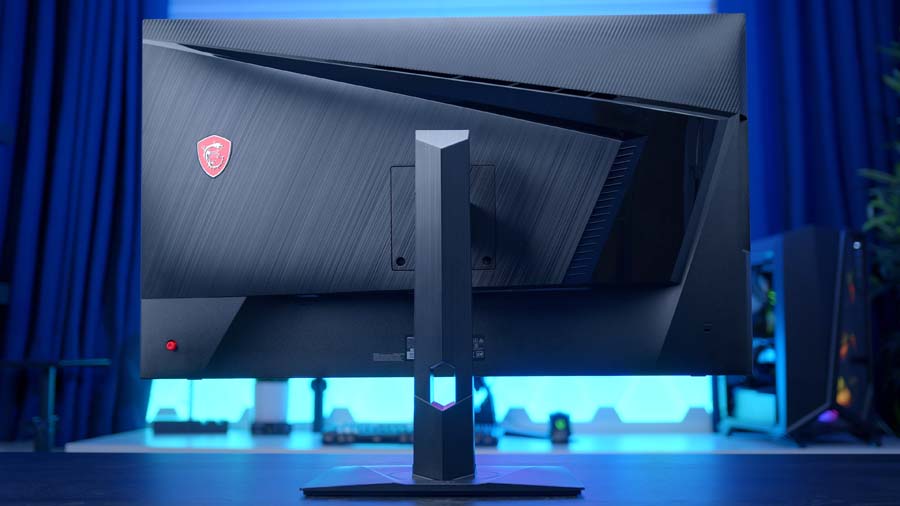

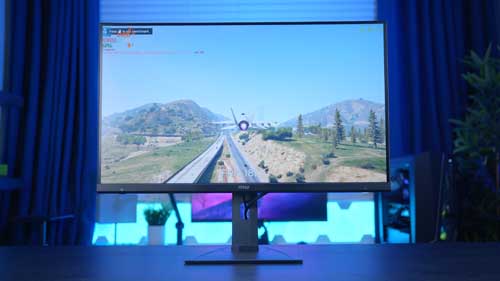
Buy the MSI MAG 323UPF on:
4. iiyama G-Master GB2790QSU-B1
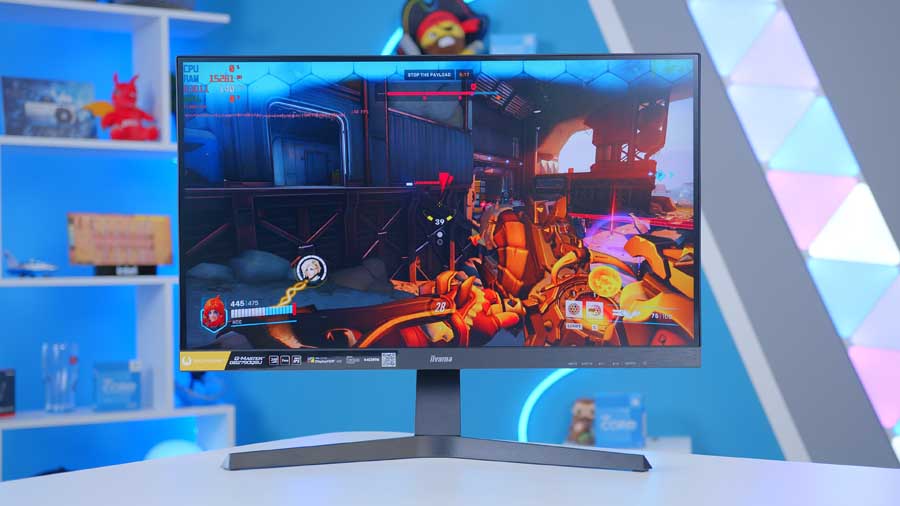
When it comes to competitive gaming, owning a display with a high refresh rate is essential, as it leads to more responsive gameplay that enables players to react better to on-screen events. Nowadays, 240Hz has become the threshold for high-intensity gaming, which makes the iiyama G-Master GB2790QSU-B1 rather valuable.
As a 1440p IPS panel with a 1ms response time, this display shares a lot of similarities with the Gigabyte FI27QX that we’ve previously tested. However, the iiyama G-Master is one of the more affordable options with this feature-set, making it a great choice to accompany a mid-range gaming PC.
One of the reasons for this lower price point could be due to the design, which lacks a lot of the bells and whistles found on other gaming monitors. Whilst the simplistic design does make this display suitable for workspace and gaming setups, it also feels rather uninspired compared to the competition. However, this is a small price to pay for an affordable display with such strong performance.
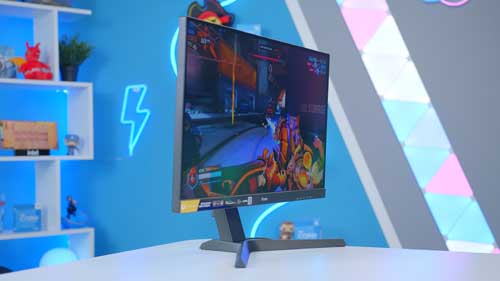

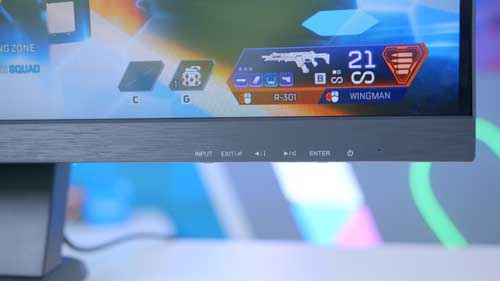
Buy the iiyama G-Master GB2790QSU-B1 on:
5. Alienware AW3423DW

Gamers with plenty of desk space might want to consider an ultrawide gaming monitor, as these displays can often provide a greater sense of immersion, whilst also being more convenient than a multi-monitor setup. We’ve tested plenty of ultrawide displays in the GeekaWhat office, but the Alienware AW3423DW remains our favourite.
This luxurious 34″ 1440p monitor utilises QD-OLED technology, which is arguably the best panel type that manufacturers can use for gaming displays. As for performance, the 175Hz refresh rate and 0.1ms response time are very respectable, resulting in excellent 1440p gameplay.
In regards to the design, the AW3423DW opts for a clean black and white colour-scheme, along with hints of RGB to highlight specific areas of the display. This gives the monitor an extra-terrestrial appearance, which is very fitting for a brand called Alienware. After testing the AW3423DW, we called it the best gaming monitor ever, and honestly, there haven’t been many reasons to change our minds.
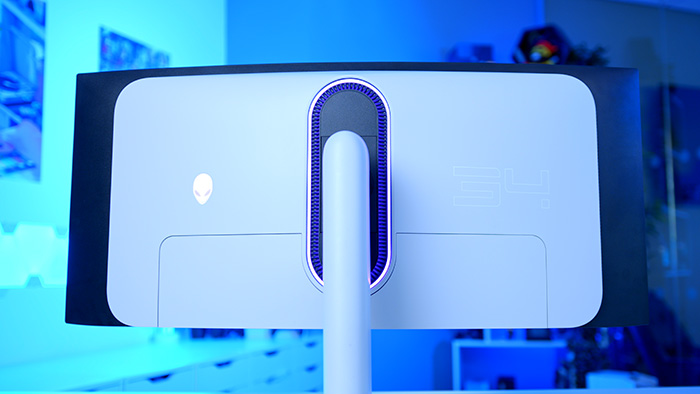
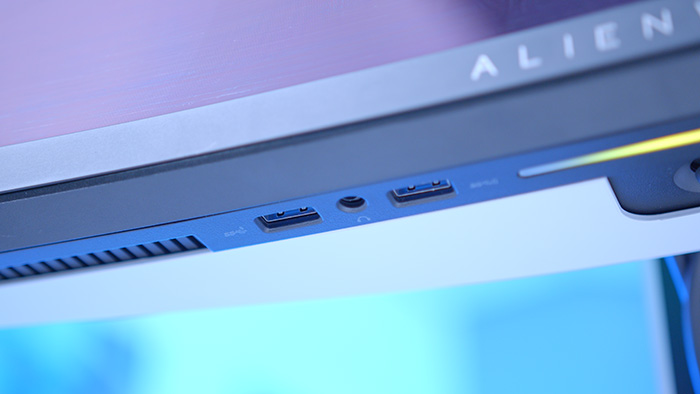
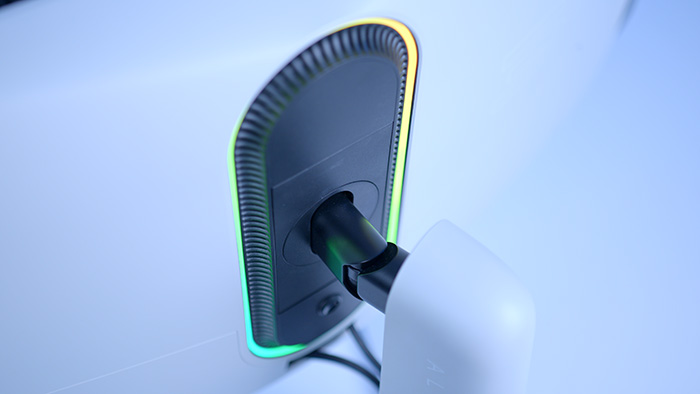
Buy the Alienware AW3423DW on:
6. Corsair Xeneon Flex 45WQHD240
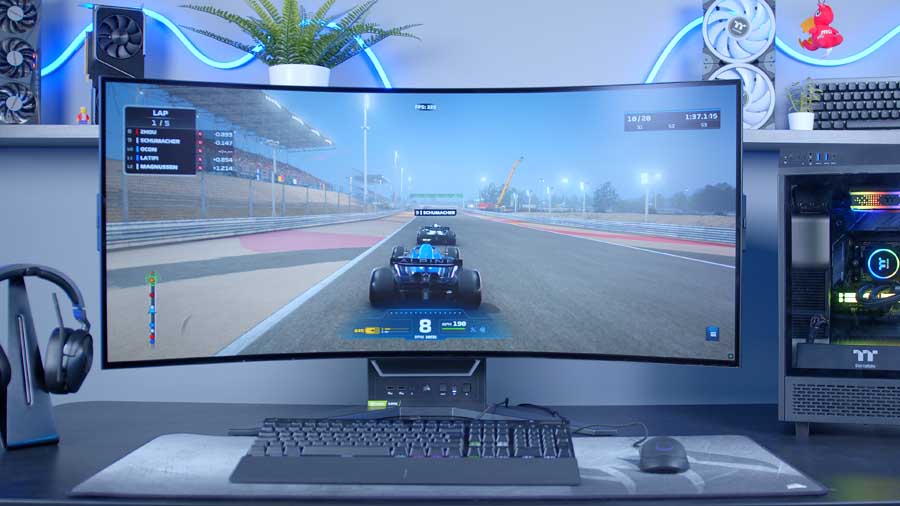
If a typical gaming monitor isn’t quite cutting the mustard, and you’re looking for a display that will raise eyebrows and drop jaws, then Corsair’s Xeneon Flex 45WQHD240 is an ideal choice for any gaming enthusiast. One of the toughest decisions gamers have to make when picking a display is whether they want their screen to be flat or curved, but the flexible nature of the Xeneon flex eradicates this issue completely.
By using the attached side handles, gamers can bend the 45″ screen from flat to an 800R curve, which allows them to dictate the level of immersion they’re wanting to experience.
Whilst the sheer size of this panel does limit manoeuvrability, it can be tilted slightly for a better viewing angle.
Though the innovative design takes the limelight, the Xeneon Flex also offers an impressive blend of performance and visual fidelity. Featuring a 1440p OLED panel with a 240Hz refresh rate and 0.03ms response time, this display certainly ticks all of the performance boxes, with the lower resolution being the main restriction of the large and flexible screen.

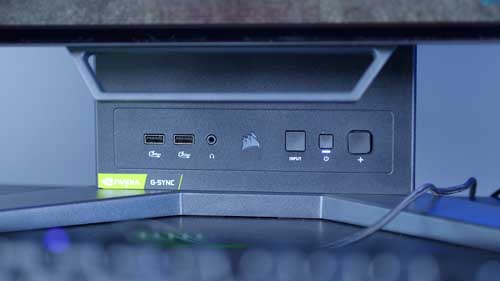
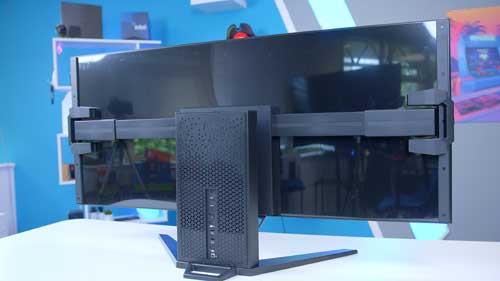
Buy the Corsair Xeneon Flex 45WQHD240 on:
How We Tested the Best Gaming Monitors
With so many gaming monitors to choose from, slimming down the selection pool was no easy task. However, using a number of testing procedures and evaluation methods, we managed to create a shortlist of the best gaming monitors currently available. After separating the displays into distinct categories based on various factors, we pinpointed the best designs within each category to battle for the top spot. The factors used to determine the best gaming monitor in each category, along with an overall winner, included the following:
- Form Factor
- Resolution
- Refresh Rate
- Performance
- Adjustability
- Connectivity
- Pricing
Which Resolution is Best for Gaming?
One of the biggest factors to consider when purchasing a monitor is the resolution, as this will have a major impact on the overall quality of the image produced. In an ideal world, 4K would be the easy answer, as this resolution leads to the best possible image quality. But with factors such as money and performance restrictions in play, there isn’t one resolution that will be suitable for every gamer.
So what resolution is right for you? We’ve provided a breakdown of each resolution below, along with recommendations as to which gamers would benefit from them most.
What Makes A Monitor Good for Gaming?
There are a number of factors that differentiate gaming monitors from the generic displays you might find in an office or workplace environment. Most noticeably, gaming monitors tend to have a more leisurely and futuristic appearance that is better suited to a gaming setup. Whilst some gaming monitors won’t look out of place within an workspace, others that include RGB lighting and various branded insignia would be less appropriate.
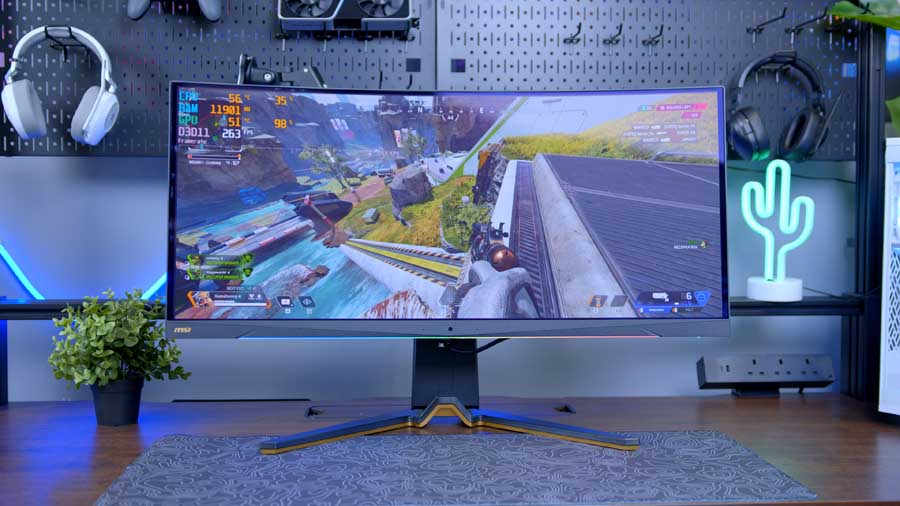
Another key difference is that gaming monitors tend to put a greater emphasis on performance, as it is crucial for a satisfactory gaming experience. Because of this, it is fairly common to see gaming monitors with a refresh rate of 120Hz or above, along with a 1ms response time being considered the standard for modern displays. On the other hand, productivity-based monitors tend to stick to a 60Hz limit with slower response times, as they tend to focus on dialling up the resolution and image quality instead.
If you are trying to decide on either a gaming or productivity monitor for your setup, we’d tend to lean towards gaming monitors, simply because they typically provide a better balance of visual fidelity and performance.


